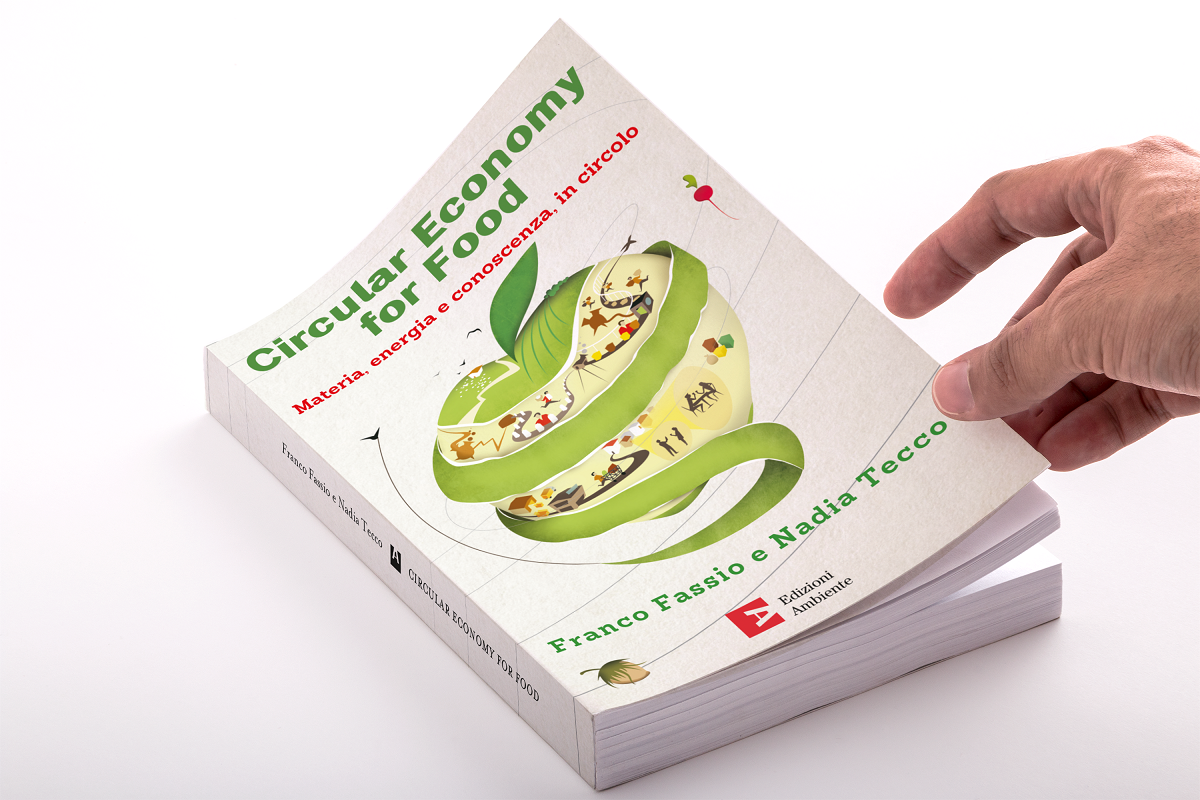Circular Economy for Food HUB
A reference point to monitor the evolution of the circular economy applied to food

The CEFF Hub will become a platform that will map and collect virtuous cases of application of the Circular Economy principles, research, publications and awareness-raising events, with the aim of providing a current scenario of the Circular Economy in the food system, to help companies and institutions to adopt the correct strategies for the transition to a new production model.
The Hub will also have the task of identifying the ways in which to communicate and make the community aware of the evolution of the circular economy, so that it can become the leverage of a paradigm shift.
The project is based on the 3 Cs of the Circular Economy for Food proposed by UNISG (prof. F. Fassio, Circular Economy For Food, Ed.A Ambiente 2018): the C of Natural, Cultural and Economic Capital, that of Cyclicity and that of Coevolution, summarized below.
In short, the new economic paradigm must start from preserving natural capital at local level, the entire stock of natural assets – living organisms, air, water, soil and geological resources – contributing to the provision of valuable goods and services for humankind and necessary for the survival of the very environment generating them. Natural capital is connected with cultural capital – that is the set of knowledge, values and attitudes towards natural and social ecosystems – that must be preserved and handed down as a precious heritage so that it can become, from one generation to the next, an integrated vision with the future, able to provide a distributed and fair source of income while feeding the economic capital.
The second C (cyclicity) invites us to think in a regenerative way and it includes three crucial concepts: extension, metabolization and renewability.
First, the extension of producer responsibility that from the origin of raw materials must take on the responsibility of the entire lifecycle of a product, including its disposal and must allow consumers to cut waste and be able to use separate waste collection correctly.
Second, metabolization, that is the final upcycling of everything marketed, with the goal of not generating waste but always just resources for the same or another system (biological and technical metabolization cycle). To this end, it is essential to adopt strategies favouring its implementation such as those suggested by eco-design for production (of materials and energy adopted both in the production and use of a product and its final disposal), for purity (reduction of materials harmful for ecosystems and non-metabolizable), for disassembling (because a product must be repairable over time and at the end of life it must be disassemblable so as to recover the most energy and matter possible), for durability (to extend the lifecycle and move business from selling products to selling services.)
The last is renewability, that is the longest use of energy and matter derived from renewable sources.
Lastly, the third C (co-evolution), inspired by the mutualistic symbiosis present in nature, a dynamic exchange in which one or more subjects take advantage of the relation they build, offering a beneficial solution for all those involved in the system. Co-evolution is developed thanks to a collaborative paradigm, which, by applying a win-win logic, offers a beneficial solution for all, including the environment. Solidarity (amongst people and populations to reduce social inequality and offer access to quality food), debate (between natural and artificial ecosystems to eliminate the asynchronicity between human economic models and natural cycles), cooperation (between communities sharing values and goals), sharing (matter, energy, and information to speed up the transition and facilitate evolution), health (of people and businesses, with widespread availability so as to generate a resilient system offering guarantees to communities) are the priorities that we must work on to give it resilience.

It will therefore have the function of promoting lifestyles attentive to sustainability and the organoleptic and nutritional quality of food, as well as promoting good practices to combat food waste, the loss of natural and cultural biodiversity, climate change and social inequality along the food supply chain.
In May 2019 a memorandum of understanding was signed with the Piedmont Region for the creation of this platform that will network and enhance projects aimed at raising awareness among consumers and food-system actors, the adoption of sustainable development objectives (SDGs).
The Partner will be able to have access to confidential data collected by the observatory, as well as organize with UNISG the annual presentation event of the results to which the entire University Network composed of the major Italian production realities will be invited and will become an opportunity to involve its stakeholders and position itself as a key player in the central challenge of the coming years.
The HUB will be a natural aggregator of companies and institutions, which thanks to a new collaborative model will be able to contribute to innovate the Food System in a circular and systemic logic.
Support the Circular Economy for Food HUB

